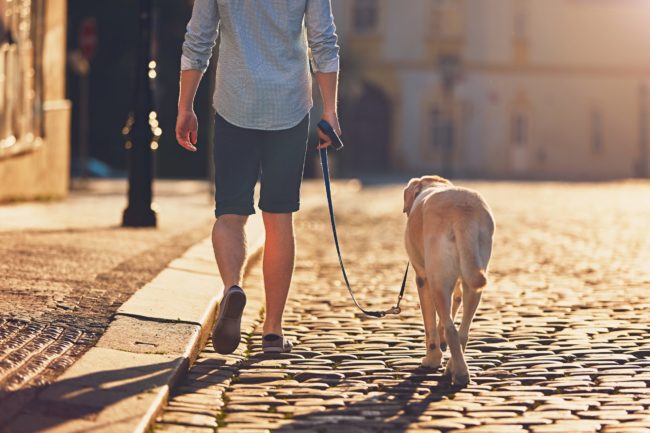Exercise is essential for the health of senior dogs, and you can help keep your older pup safe and happy with regular walks, strength training exercises, and fun activities!
Older dogs may start to slow down a little, but that doesn’t mean you should ditch the exercise. In fact, exercise can help keep older dogs youthful, keep them mobile, and help them maintain a healthy weight. However, you may have to modify your routine a little to accommodate your senior dog’s changing needs, and these three tips will help you with that!
1. Mind the Temperature When Walking an Elderly Dog
Almost all dogs enjoy taking walks, and this rarely changes as they become older. Walking is a great low-impact activity that benefits your dog’s health as well as your own. As your dog ages, you should be aware of your speed, the outside temperature, and how your dog seems to be feeling both during and after the exercise. Elderly dogs are more susceptible to temperature fluctuations, so plan walks to avoid frostbite or overheating and always keep an eye on your dog.
2. Use Exercises to Target Weak Areas
If your dog has a condition like osteoarthritis, hip dysplasia, or an injury, ask your veterinarian about exercises that can help to rebuild their musculature and alleviate pressure on their joints. Focus on problem areas to strengthen those regions and increase your dog’s enjoyment of the exercises.
3. Try New Activities to Keep It Fun!
Basic Obstacle Courses
We tend to think of active puppies and young dogs when we think about agility training and obstacle courses, but there are also at-home agility training kits for senior dogs. It doesn’t matter if you’re both beginners: agility training is a terrific form of physical and mental exercise.
Swimming
Your dog can get a full-body, low-impact workout by swimming. It’s also a great way to relieve aches and stiffness while letting them develop their strength because the water bears their weight and helps relieve pressure on their joints as they move. Older dogs can also benefit from hydrotherapy, which is frequently recommended for dogs of any age following an injury or major surgery to aid in their physical recuperation.
Cross-Training
Cross-training really just means using different types of exercises to condition your body and gain strength. There are plenty of cross-training activities you can do with your dog, including:
- Hiking
- Walking on different types of terrain
- Climbing stairs
- Practicing balancing
Always consult your veterinarian before beginning any fitness program with an older dog. Talk about their capabilities, limitations, and how to enhance their physical condition while keeping them safe and comfortable.
The post 3 Things You Need to Know About Senior Dogs and Exercise appeared first on Animal Wellness Magazine.
This content was originally published here.

